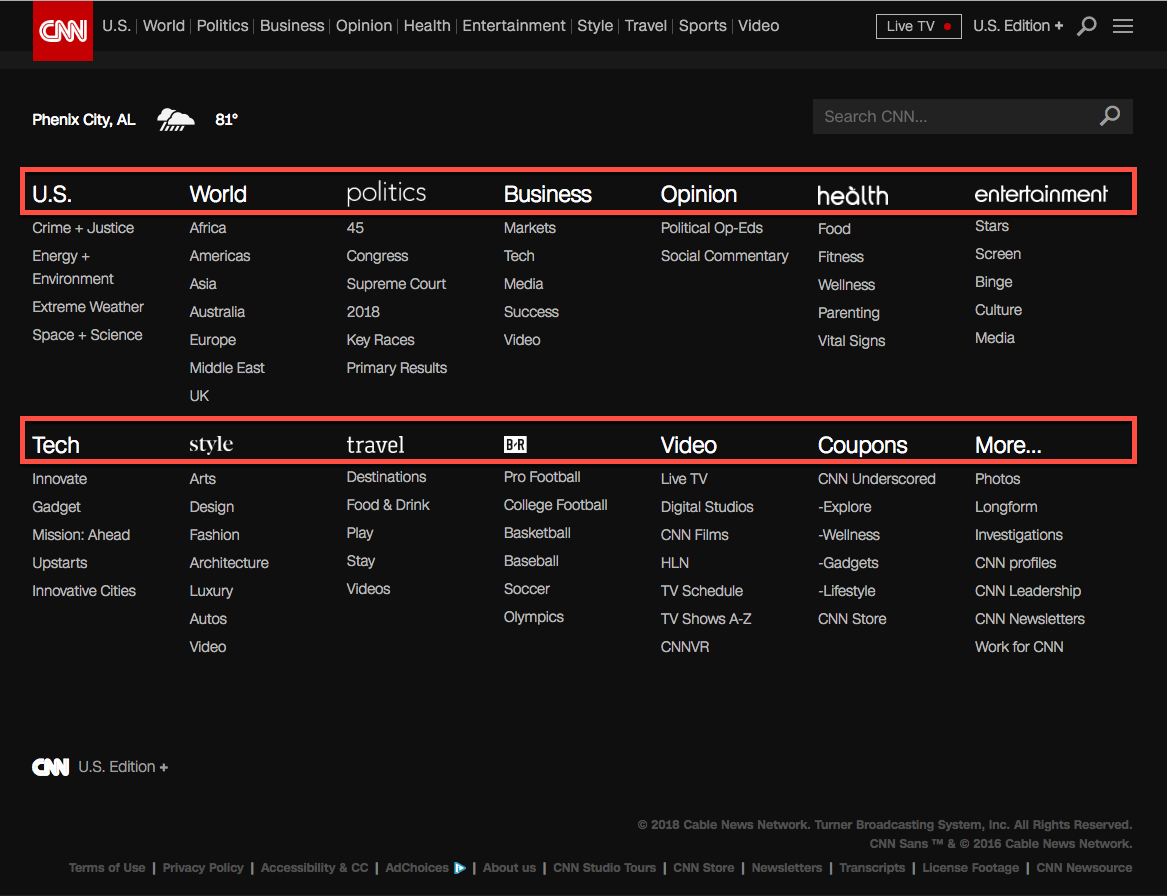anh note’s for additional research on Project 3: Small Business Website

- Planning and Design:
- Define Structure: Determine the layout and components of your navigation bar and footer. Consider elements such as menus, logo placement, social media icons, and contact information.
- Wireframing: Sketch the visual representation of your navigation bar and footer to establish the arrangement and functionality of each element.
2. HTML Structure:
- Semantic Markup: Use semantic HTML tags like
<nav>for the navigation bar and<footer>for the footer to enhance accessibility and SEO. - Divide Sections: Structure your navigation bar and footer into logical sections using
<ul>(unordered lists) and<li>(list items).
3. Navigation Bar:
- Responsive Design: Ensure your navigation bar is responsive and adapts to different screen sizes using CSS media queries.
- Dropdown Menus: Implement dropdown menus for organizing subcategories or additional pages. Use
<ul>for the dropdown container and<li>for each menu item. - Accessibility: Include keyboard navigation and ensure text alternatives for icons or images to support users with disabilities.
- Highlight Active Page: Use CSS to highlight the current page or section in the navigation bar to provide visual feedback to users.
Example:
<nav>
<div class="container">
<div class="logo">
<a href="#">YourLogo</a>
</div>
<ul class="menu">
<li><a href="#">Home</a></li>
<li><a href="#">About</a></li>
<li class="dropdown">
<a href="#">Services</a>
<div class="dropdown-content">
<a href="#">Service 1</a>
<a href="#">Service 2</a>
<a href="#">Service 3</a>
</div>
</li>
<!-- Add more menu items as needed -->
</ul>
</div>
</nav>4. Footer:
- Copyright Information: Include copyright information and company details in the footer section.
- Contact Information: Provide contact details such as address, phone number, and email for users to reach out.
- Social Media Links: Add icons or links to your social media profiles for users to connect with your brand.
- Site Map: Optionally, include a site map or additional navigation links for easy access to various sections of the website.
Example
/* Navigation Bar Styles */
nav {
background-color: #333;
color: #fff;
padding: 10px 0;
}
nav .container {
display: flex;
justify-content: space-between;
align-items: center;
}
nav .menu {
list-style: none;
display: flex;
}
nav .menu li {
margin: 0 10px;
}
nav .menu li a {
color: #fff;
text-decoration: none;
}
nav .dropdown-content {
display: none;
position: absolute;
background-color: #333;
padding: 10px;
}
nav .dropdown:hover .dropdown-content {
display: block;
}
/* Footer Styles */
footer {
background-color: #333;
color: #fff;
padding: 20px 0;
text-align: center;
}
footer .container {
display: flex;
justify-content: space-between;
align-items: center;
}
footer .footer-logo a {
color: #fff;
text-decoration: none;
}
footer .footer-social a {
color: #fff;
text-decoration: none;
margin: 0 10px;
}
5. CSS Styling:
- Consistent Styling: Apply consistent styling across the navigation bar and footer to maintain visual coherence.
- Color and Typography: Choose appropriate colors and fonts that align with your website’s design theme and branding.
- Spacing and Alignment: Ensure proper spacing and alignment of elements for a clean and organized appearance.
- Hover Effects: Add hover effects for menu items and social media icons to provide visual feedback to users.
Example
/* Navigation Bar Styles */
nav {
background-color: #333;
color: #fff;
padding: 10px 0;
}
nav .container {
display: flex;
justify-content: space-between;
align-items: center;
}
nav .menu {
list-style: none;
display: flex;
}
nav .menu li {
margin: 0 10px;
}
nav .menu li a {
color: #fff;
text-decoration: none;
}
nav .dropdown-content {
display: none;
position: absolute;
background-color: #333;
padding: 10px;
}
nav .dropdown:hover .dropdown-content {
display: block;
}
/* Footer Styles */
footer {
background-color: #333;
color: #fff;
padding: 20px 0;
text-align: center;
}
footer .container {
display: flex;
justify-content: space-between;
align-items: center;
}
footer .footer-logo a {
color: #fff;
text-decoration: none;
}
footer .footer-social a {
color: #fff;
text-decoration: none;
margin: 0 10px;
}Testing and Optimization:
- Cross-Browser Compatibility: Test your navigation bar and footer across different web browsers to ensure consistent rendering.
- Mobile-Friendliness: Verify that your navigation bar and footer are mobile-friendly and provide a seamless experience on smaller devices.
- Performance Optimization: Optimize code and assets to improve page load times and overall website performance.

Leave a Reply